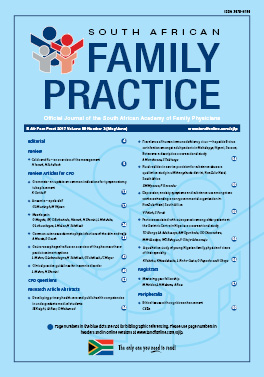Anaemia - a pale ale?
Keywords:
anaemia, blood film, evaluation, macrocytic, microcytic
Abstract
Despite some modest improvements described recently, anaemia remains a significant global public health concern affecting both developed and developing countries. It affects a quarter of the global population, including 293 million (47%) children who are younger than five years of age. A prevalence of 42% and 30% has been described in pregnant and non-pregnant women, respectively. Children and women of reproductive age are at high risk, partly because of physiological vulnerability, followed by the elderly. Africa and Asia are the most heavily affected regions, accounting for 85% of the absolute anaemia burden in highrisk groups. According to the World Health Organization global database on anaemia (1993–2005), this disorder was considered to be a moderate public health problem in South African preschool children, pregnant women and non-pregnant women of reproductive age. There has been an increased awareness of anaemia and its consequences on the health and development of women and children in the past few decades. The many underlying causes of the various types of anaemia seen in general practice means it is essential that practitioners’ clinical decisions be underpinned by a sound knowledge of the pathological processes involved. Thorough history-taking will guide practitioners to request specific tests to confirm or refute differential diagnoses. Management must be developed around the specific type of anaemia and the potential physical and psychological effects it may have on the individual.
Section
Review Articles
By submitting manuscripts to SAFP, authors of original articles are assigning copyright to the South African Academy of Family Physicians. Copyright of review articles are assigned to the Publisher, Medpharm Publications (Pty) Ltd, unless otherwise specified. Authors may use their own work after publication without written permission, provided they acknowledge the original source. Individuals and academic institutions may freely copy and distribute articles published in SAFP for educational and research purposes without obtaining permission.

